Inquiry question scratch golfer
1 additions to document , most recent 11 months ago
| When | Why |
|---|---|
| Dec-05-24 | more info |
0 General Document comments
0 Sentence and Paragraph comments
0 Image and Video comments
Becoming a scratch golfer is a process, so don’t hesitate to implement these strategies into your routine starting today.
I highly encourage you to track this entire process so that you feel confident in the progress you are making. Sometimes to see how far we have come, we have to look back at where we started.
Start Tracking Everything
I’m not telling you that you will always have to track every single stat about your round of golf.
However, when you first start this process of learning to become a scratch golfer, you should track everything.
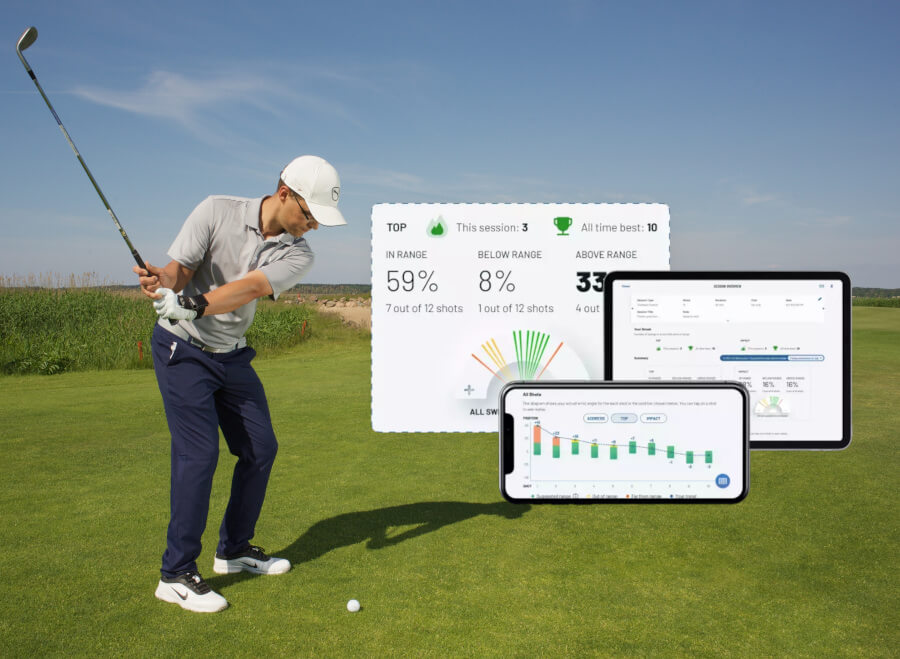
The best data you can collect is strokes gained.
Using a strokes gained app will help you see the areas of your game that need the most practice and what is keeping you from becoming a scratch golfer. Without this data, you are just going to prolong the process.
Greens in regulation, fairways hit, putts, and bunker saves are all important, but strokes gained give you more detailed information about specific performance from various locations on the course.
Learn to track this data and then eventually how to analyze it and apply it to your golf game.
Some golfers are shocked to find that their performance from 100 to 150 yards in is the real thing keeping them from being scratch golfers.
The more data you have, the easier it is to improve.
Learn the Role of the Wrists in Your Golf Swing
Wrists play a vital role in your golf swing. Scratch golfers and professionals have very little extension in their wrists at impact. In fact, instead, they have a slight bit of flexion in the wrist.
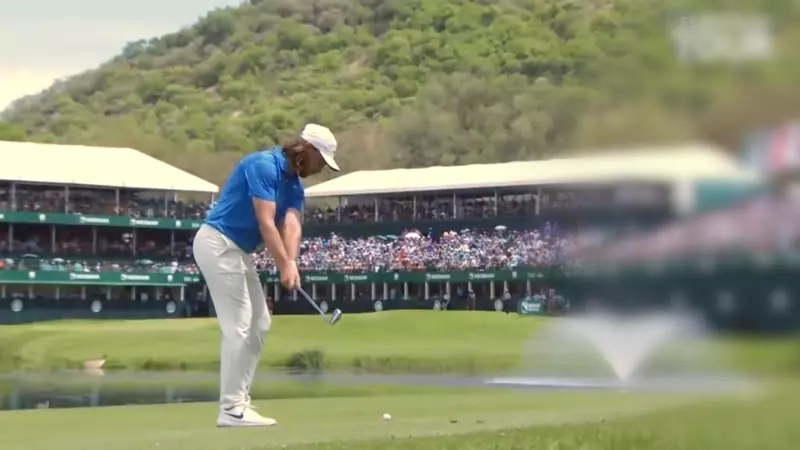
Knowing if your wrist angles are helping or hurting your golf game is important. Take a look at your wrist angles at setup, top of the backswing, and impact.
The HackMotion gives you a real-time view of the position of your wrists and where your performance may be lacking.
After analyzing more than 1,000,000 golf swings, we know that great players add a very little extension in their lead wrist from setup to the top of the backswing. On the downswing, the extension is decreasing so there is less than there was at setup.
HackMotion also becomes a great practice tool for learning how to improve your wrists’ role in the golf swing. Remember what I said about scratch golfers becoming more detail-oriented?
HackMotion can absolutely help.
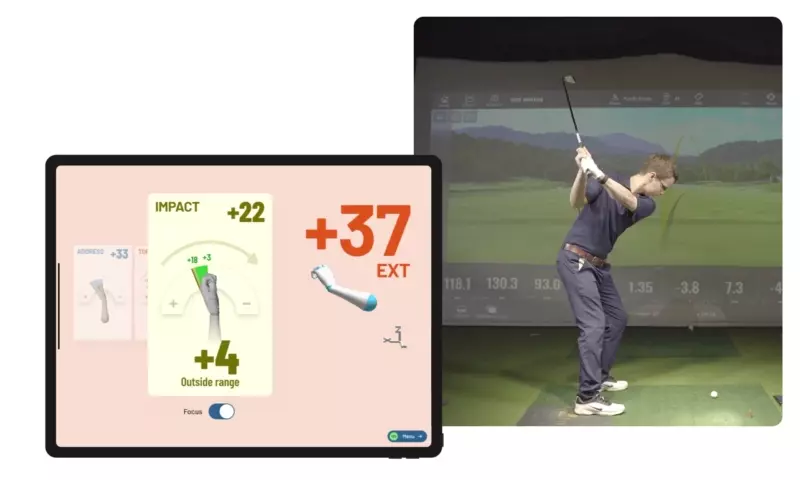
Get Accurate Distances
Your yardage to the pin needs to be accurate if you are going to become a scratch golfer. Without accurate yardage, you are playing a bit of a guessing game trying to get the ball close to a hole.
We know that at some point, a scratch golfer needs to have the ability to control distances in their clubs. Once you get to the point of controlling distance, make sure you know how far you have to hit each club.
I find that a combination of GPS and rangefinder technology is often the best. With the GPS, you can get the yardage for the front center and back of the green. With the rangefinder, you will get the pin. Rangefinder gives you your yardages, but the GPS tells you what your strategy should be to get the ball close to the hole.
If you are worried about having all these devices on the course, simply get a golf GPS app and a quality rangefinder.
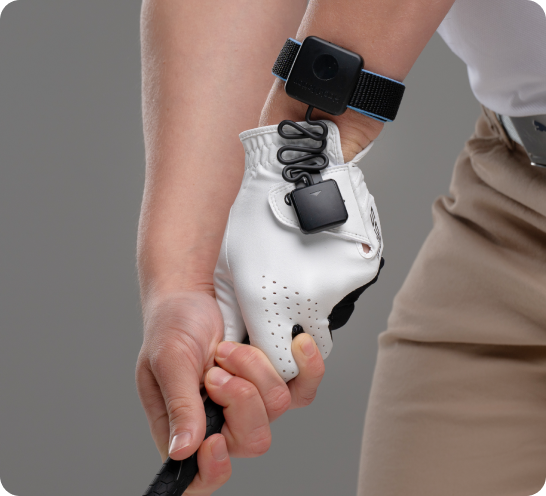
Know How to Control the Clubface
Scratch golfers know how to control their clubface. There is no wondering or guessing what the clubface is doing in the backswing or at impact. Instead, scratch golfers have complete confidence in the position of their clubhead.
How do you learn how to control the clubface?
There are two ways; the first is practice, and the second is technology. The more you practice, the easier it will be to feel what the clubface is doing.
HackMotion is a great solution for helping you understand how your wrists and hands respond to your moves and what it does to the clubface.
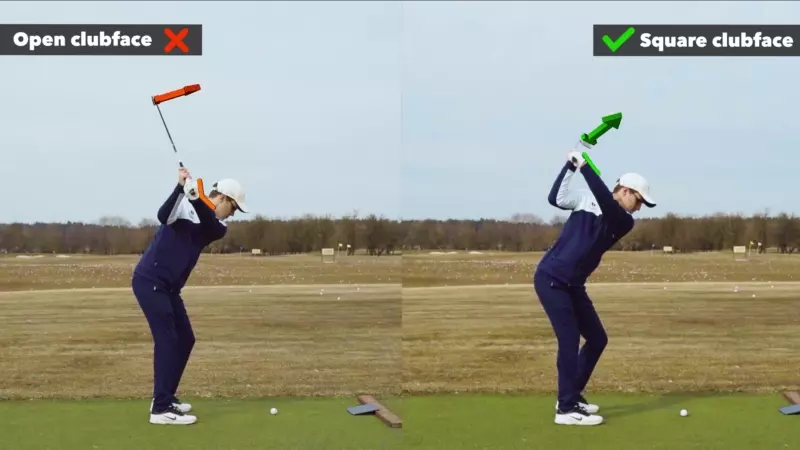
Become a Grip Expert
The golf grip is our only connection with the golf club. If you are good at getting your hands in the correct place on the golf club, you can have a lot more success.
Keep your grip neutral whenever possible, but know how to change it a bit to impact the ball flight.
HackMotion can help you determine if your hands are in the correct position when you set up to hit a golf shot. Pay attention to variations in the starting position with each swing to ensure you are at least relatively close with each swing you take.
Having a conscious thought about your hand position being a part of your pre-shot routine and setup is not a bad thing.
Plan Your Round Ahead of Time
Scratch golfers have a plan for the course.
The night before your round of golf, try to do a mental play-by-play of the round to determine your course of action for your round of golf that day. This could take just five minutes of your time, but it’s important.
I’ll let you in on a little secret, not every hole is a driver hole!
Being smart about the club you choose off the tee, which golf holes are birdie holes and safe par holes, is part of becoming a scratch golfer. As a scratch golfer, you will make bogeys from time to time, but when you make a triple, the day gets much harder.
Learn a Variety of Shots Around the Green
It’s great that you can hit a high lofted shot with your 56-degree wedge that ends up pretty close to the pin. However, this is not always the best shot to hit. The best players have a bag full of shots that they can choose from when around the greens.
You should have both high and low lofted shots to choose from. In addition, I would play around with bounce and grind options on your wedges. If you have all medium bounce wedges, you may struggle when the lie changes.
Also, incorporate more than one golf club for shots around the green. Sometimes a 9 iron is the right club, and other times it’s a lob wedge. Don’t get too stuck on one club being the solution.
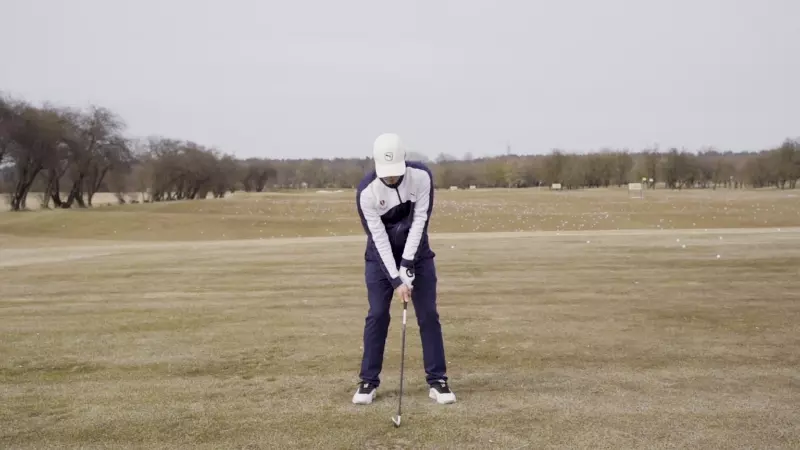
Schedule Your Practice
Life is busy, and finding time to put in your golf game is often hard. If your practice is on your schedule, you will get it done. Schedule golf practice like you schedule a doctor’s appointment or a business meeting.
Your practice should focus on a variety of skills. Make sure you dedicate time to the short game and long game. I also recommend practicing the types of golf shots that will get you out of trouble.
If you can learn how to hit a low stinger or how to hit out of thick rough, it will go a long way on the golf holes where you need to save a par.
Incorporate technology into your practice so you have results that you can track and look at over time. When things are working well, and you are playing great golf, you can look at your notes about the type of practice you have been doing and what works for your game.
Lastly, practice gives you confidence that you can accomplish anything on the golf course, take advantage of that concept.
Pay Attention to the Detail
Scratch golfers learn things about their game and the game of golf to become better players. Do you know what wrist extension is? Can you explain and demonstrate the difference between a slice and a hook? What is smash factor?
Learning more and more about the game will only make you a stronger player and give you a greater chance of consistently shooting in the 70’s.
Pay attention to how weather factors into the game, course conditions, equipment, clothing, and even nutrition.
Distance does Matter
When an amateur golfer can drive the ball at least 250 yards, the game of golf gets easier. If you can’t hit the ball all that far, the approach shots you have to the green become more difficult.
Golfers hitting a 4 iron into the green have a smaller percentage of getting it close to the hole than the golfers hitting a 9 iron into the green.
Don’t let people tell you that distance doesn’t matter; it does.
Play with golf equipment that helps you increase your total distances. In addition, make sure that you are working on your physical fitness to become stronger, more balanced, and able to hit the ball further.
Distance matters and it matters even more when you want to become a scratch golfer.
Putting Stroke Needs to be Repeatable
To become a scratch golfer you need a putting stroke that you can repeat. Find a grip you love and learn how to put your hands on the club the same way every time.
Use the HackMotion to measure your wrist angles in putting and see if you can keep them consistent from one stroke to the next. The greens and the conditions are going to vary from one day to the next, make sure your stroke does not.
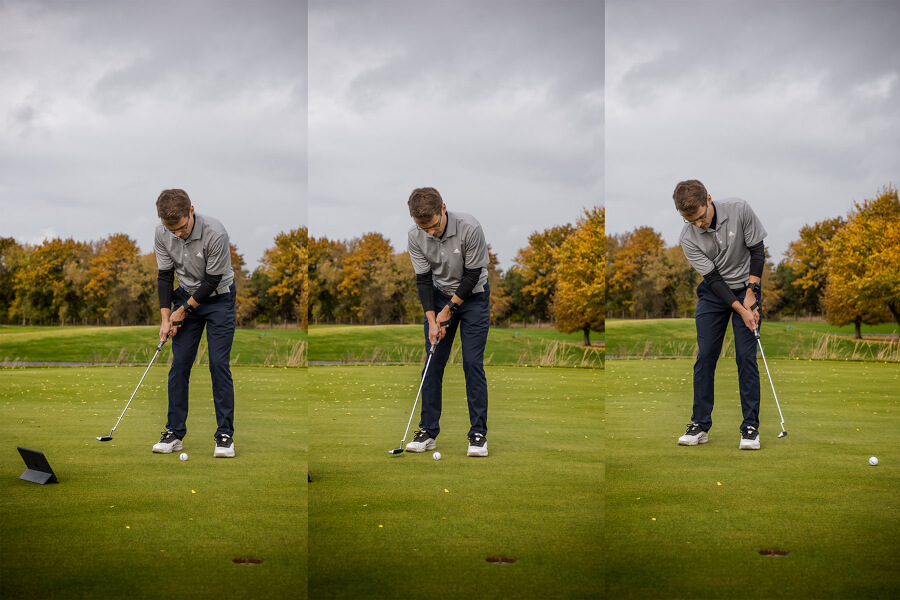
With Smart Golf, You Can Recover from a Bad Hole
Smart golf involves your decision making ability on the golf course. We see some perfect examples of this when watching professional golf. Recently a professional golfer, Wyndham Clark, was in a hazard near the green.
To some, his ball looked like it might be playable. However, his stance was awkward, and the ball was buried.
Clark knew that if he took the penalty stroke and got up and down, he would make a bogey.
He also knew that if he attempted the shot and didn’t succeed, he was looking at a double or triple bogey. The double or triple bogeys are hard to recover from if you are trying to go low.
Be a smart player, take the penalty stroke sometimes, make a great bogey, and move on to the next hole. Remember that hitting the ball in the rough or the sand means you will have to recover, don’t turn a bad hole into a terrible hole.
Added December 05, 2024 at 10:23am
by 2025 Conrad Beck
Title: more info
What Is a Scratch 24
If you’ve spent any time around golfers, you’ve probably heard the term scratch golfer. But what is a scratch golfer, and how does one achieve such a coveted status? Being a scratch golfer means playing at a very high level, with a handicap of 0.
In other words, a scratch golfer is capable of playing to level par or better on any course. In this blog, we break down what scratch golf truly means, and explore what it takes to become one.
What Handicap Is a Scratch Golfer?
A scratch golfer is someone with a Handicap Index® of 0.0, meaning their typical score is expected to match the course’s par over a full 18 holes. The golf handicap system measures a player’s ability in relation to par, and being a scratch golfer means you’re consistently playing rounds at level par on courses of standard difficulty. It’s important to note that scratch golf is an elite level of play.
Scratch Golfer vs. Pro: What’s the Difference?
The main difference between a scratch golfer vs. pro lies in consistency and competition level. While scratch golfers are excellent players, professional golfers are typically a step above in terms of skill, mental toughness, and experience under pressure. Pros compete regularly in high-stakes tournaments and play from the most difficult tee boxes, often with extremely challenging pin placements and course conditions.
A professional golfer typically has a plus handicap below zero, meaning they frequently shoot under par, especially on difficult courses. While a scratch golfer can hold their own on a standard course, professionals have honed their skills to perform consistently in a variety of conditions and under tournament pressures.
How To Become a Scratch Golfer
Now that you know what scratch golf is, let’s explore how to become a scratch golfer. It’s not easy, and it requires serious dedication, practice, and skill development. Here’s a step-by-step guide to help you on your journey:
-
Lower Your Handicap
Your first goal is to reduce your handicap as much as possible. You’ll need to get your handicap down to 0, which means consistently playing rounds at or below par. This will involve focusing on all areas of your game—driving, approach shots, short game, and putting. -
Consistent Practice
Scratch golfers practise regularly, and not just by hitting balls on the driving range. They fine-tune every aspect of their game, from driving accuracy to short-game precision. A balanced practice routine that includes time spent on the putting green, in bunkers, and from difficult lies is essential. -
Course Management
One of the key factors in becoming a scratch golfer is developing strong course management skills. Scratch golfers are adept at strategising their way around a course. Rather than trying to hit every shot perfectly, they play with calculated risks, always focusing on getting the ball in the right position for the next shot. -
Physical and Mental Fitness
Golf is as much a mental game as it is physical. To play scratch golf, you need to stay focused for 18 holes without letting a bad shot affect your mental state. Developing mental toughness is crucial, as is maintaining good physical fitness to avoid fatigue late in rounds. -
Get a Coach
Even the best golfers have coaches. If you’re serious about becoming a scratch golfer, consider hiring a coach who can help identify weaknesses in your game and offer targeted advice to improve. Coaches can also help you better understand your swing mechanics and course strategy.
How Long Does It Take To Become a Scratch Golfer?
How long does it take to become a scratch golfer? There’s no definitive answer, as it depends on the golfer’s starting point and the amount of time they dedicate to practise. For many golfers, it can take several years to lower their handicap to 0. However, with dedicated practice, expert coaching, and focused play, some golfers may achieve scratch status in a shorter time frame.
Is Scratch Golf for You?
Becoming a scratch golfer is an incredible accomplishment, but it requires a serious commitment to improving every aspect of your game. While it’s not an easy journey, it’s certainly achievable with the right combination of skill, practice, and mental resilience.
If you’re serious about lowering your handicap, iGolf can help you track your progress. While using iGolf to obtain a Handicap Index®, you can monitor your game improvement over time and see how close you’re getting to scratch status. Sign up today for just £46 per year and gain access to invaluable tools for tracking your journey to becoming a scratch golfer!
Already an iGolf subscriber?
General Document Comments 0









 on the uploaded document.
on the uploaded document.
0 archived comments